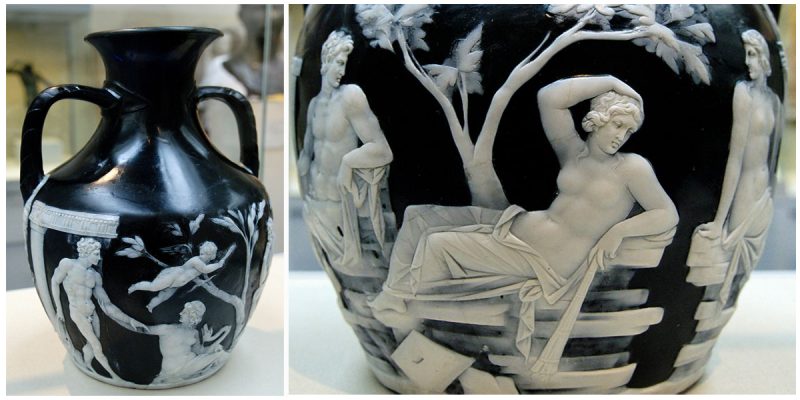The Portland Vase is a Roman two-handled glass amphora which is dated to between 1 AD and 25 AD. It is a Roman cameo glass which depicts the marriage of Peleus and Thetis from Greek Mythology.
Known as the best piece of Roman cameo glass, it has been an inspiration to many glass makers until today. Each relief is individually made from a mold and applied by hand. The vase may have been commissioned for a member of the family of emperor Augustus.
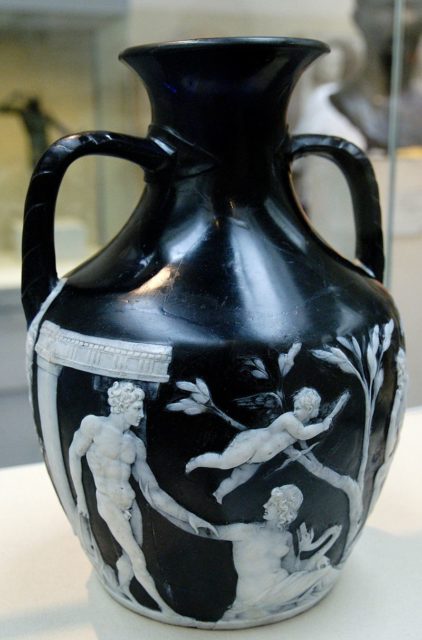
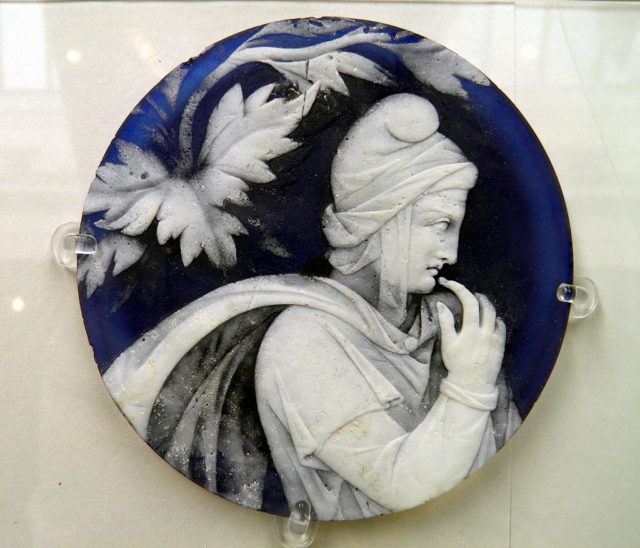
The vase is a violet-blue glass surrounded with white glass cameo which depicts two scenes. There are horned heads with beards below the handles of the vase that are placed between the scenes. The scenes are depicting seven human figures and a large snake. The vase is 24.5 cm in height and 17.7 cm in its maximum width. On the colored disk at the bottom of the vase, there is a head which is believed to be that of Paris.
The vase was supposedly discovered in a sarcophagus in the tomb of the emperor Alexander Severus and his mother, by Fabrizio Lazzaro and was excavated sometime around 1582. The first reference to it was found in a letter in Rome in the 17th century.
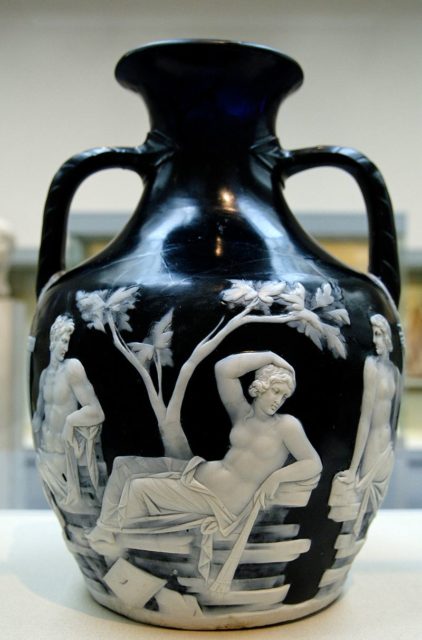
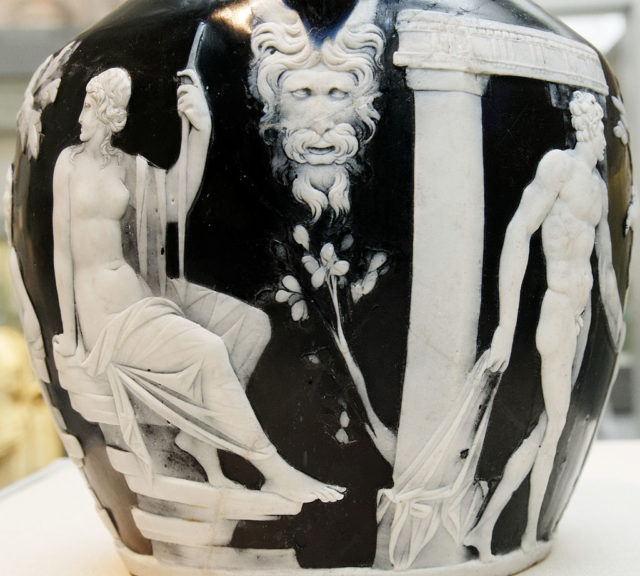
The French scholar Nicolas-Claude Fabri de Peiresc sent the letter to the painter Peter Paul Rubens, saying that the vase was in the collection of Cardinal Francesco Maria Del Monte. In the 18th century, Sir William Hamilton sold the vase to the widow of William Bentrick, 2nd Duke of Portland, and in 1786, it passed into the hands of her son. The vase has been in the British Museum since 1810, but finally, it was purchased in 1945 from the 7th Duke, and is on display in Room 70.
On 7 February 1845, the vase was smashed into more than 200 pieces by an Irish visitor. He is known as William Lloyd and he was immediately arrested after throwing a nearby sculpture on top of the case where the vase was standing. The fragments were gathered and glued together. Nobody knew the true identity of this visitor and he was bailed out of jail when an anonymous benefactor paid the fine by mail.
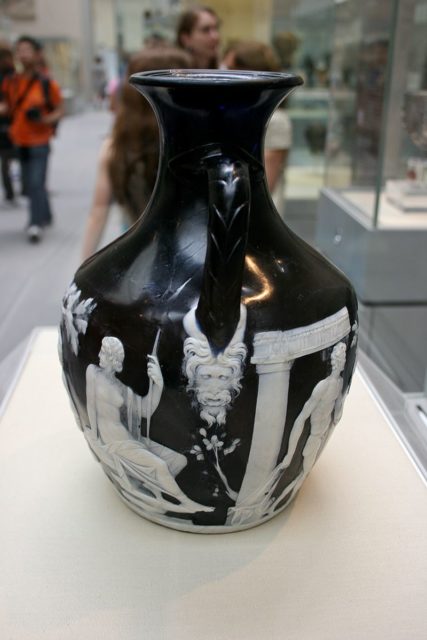
So, maybe the smashing of the sculpture and the vase was on purpose. After further investigation, it was concluded that his name was William Mulcahy, and he was a student at the Trinity College in Dublin who had gone missing.
Read another story from us: Landnám, loot, and long-distance trade: understanding Viking economics
He explained to the police that the only reason that he had smashed the vase was because he had been drinking the whole week.
